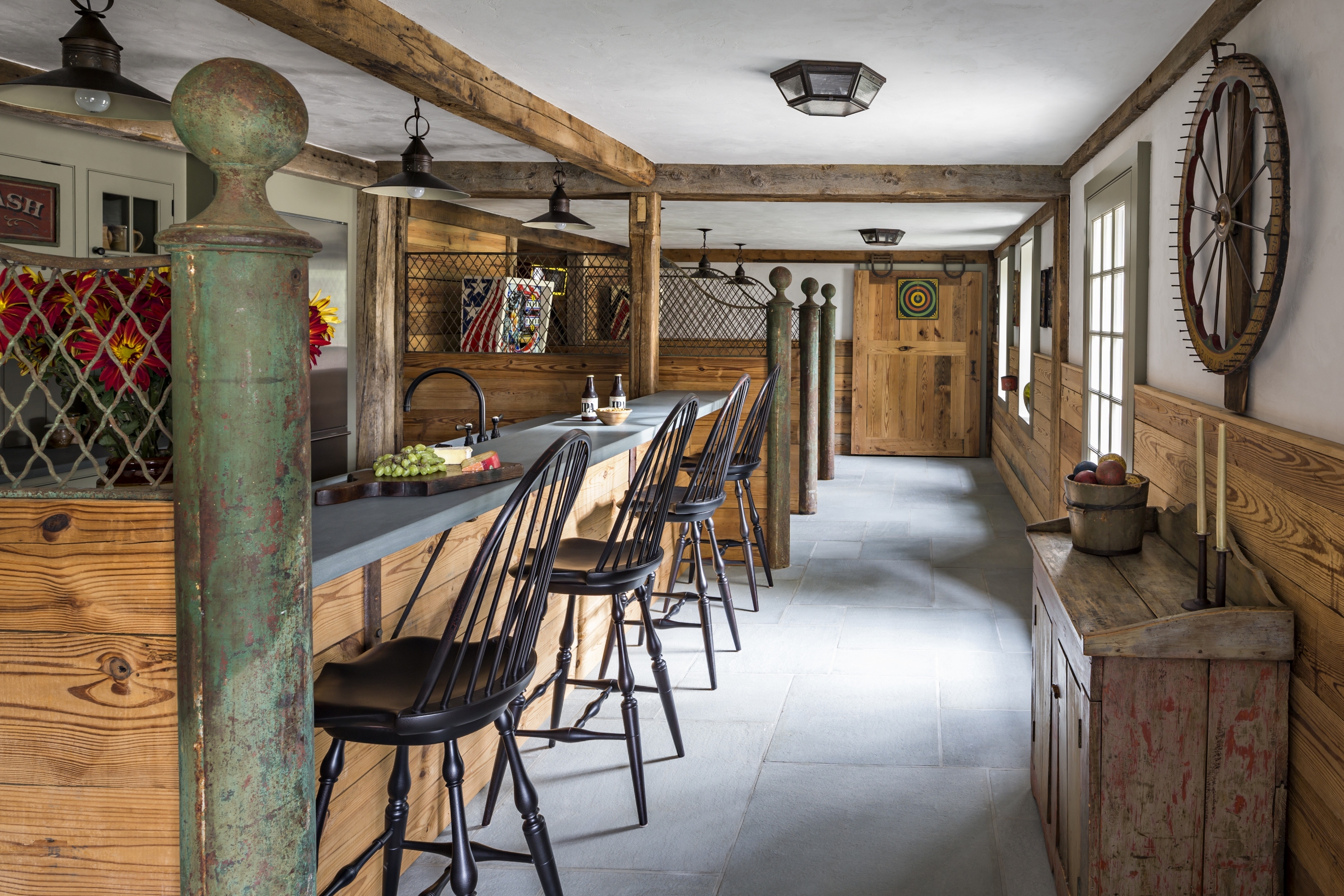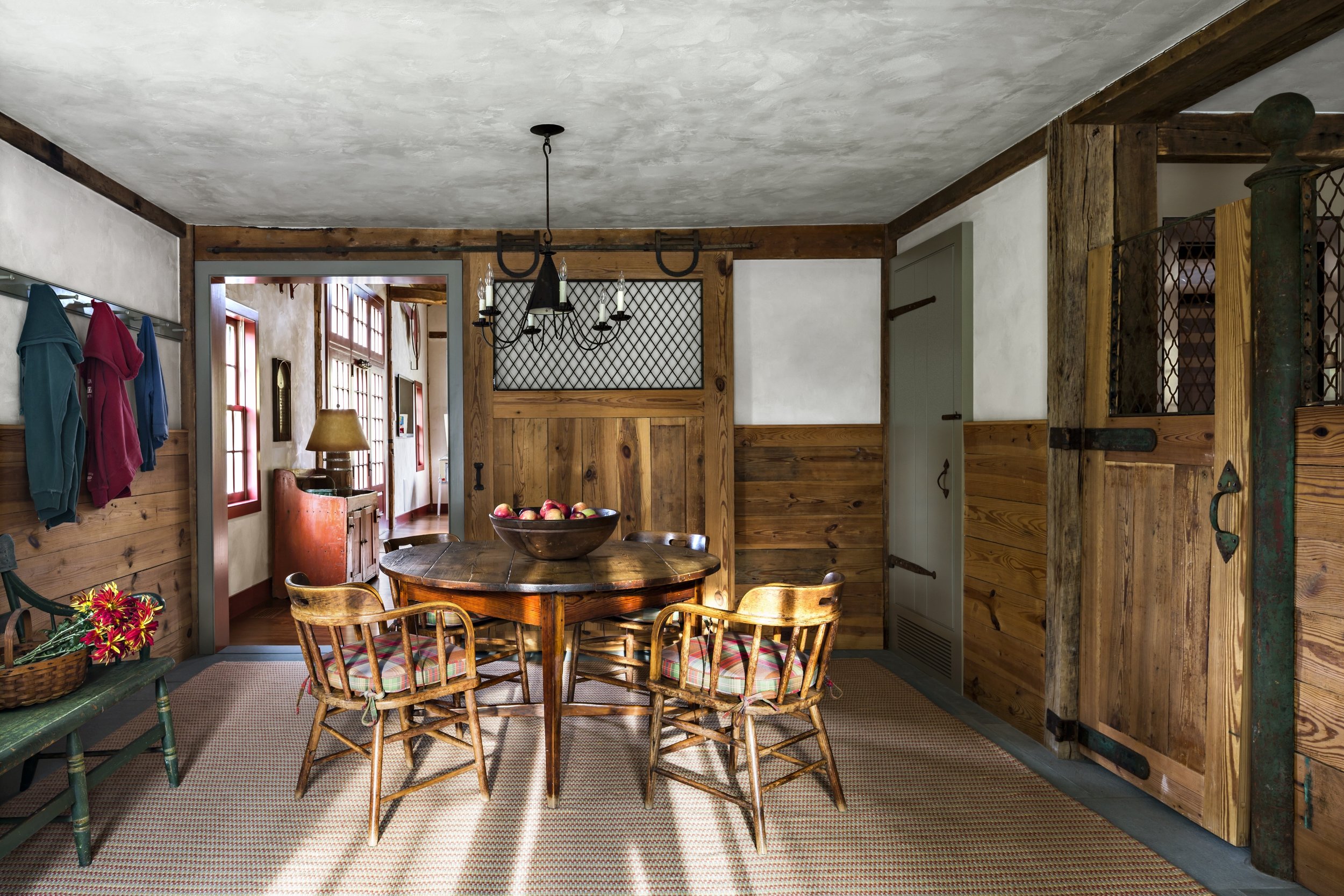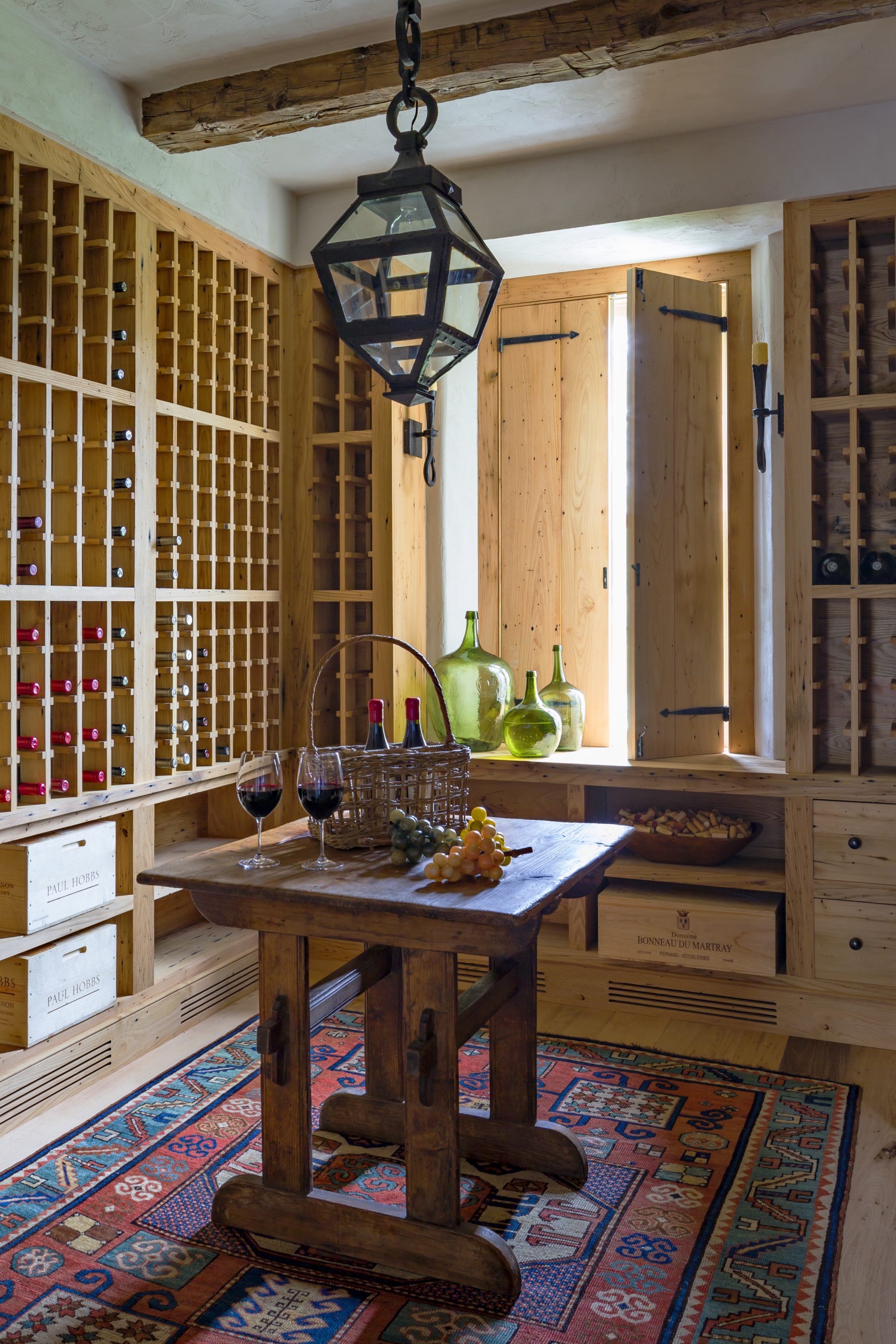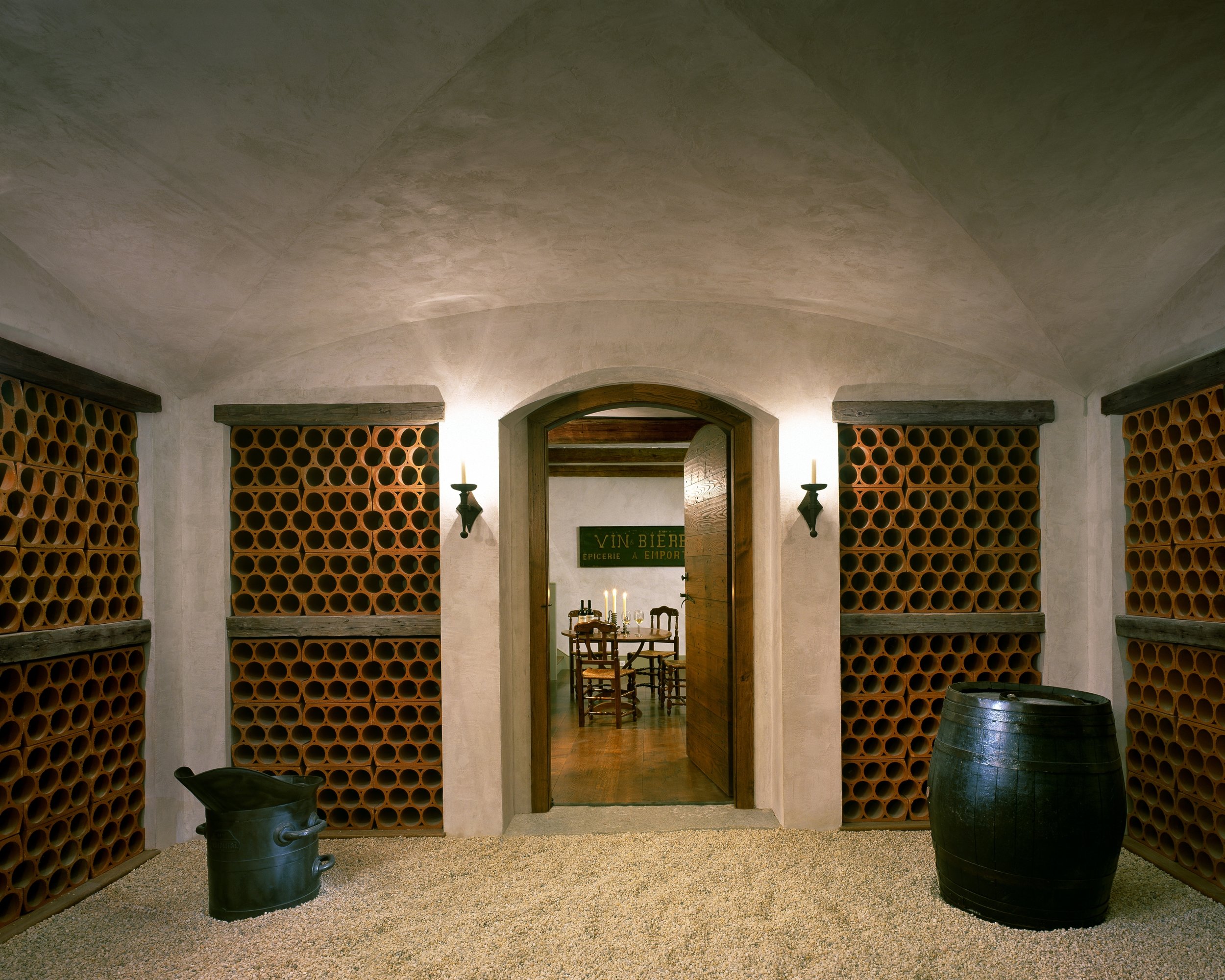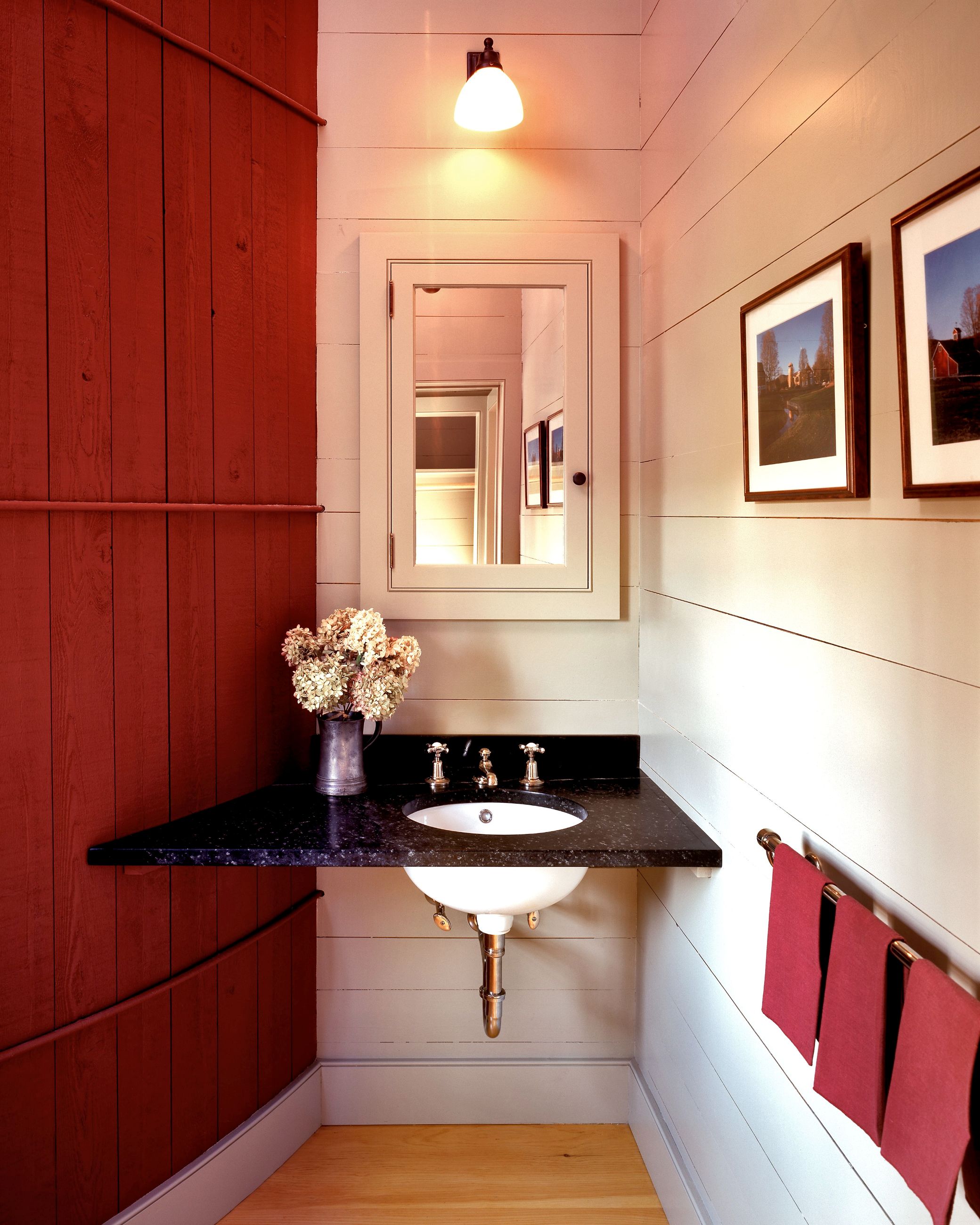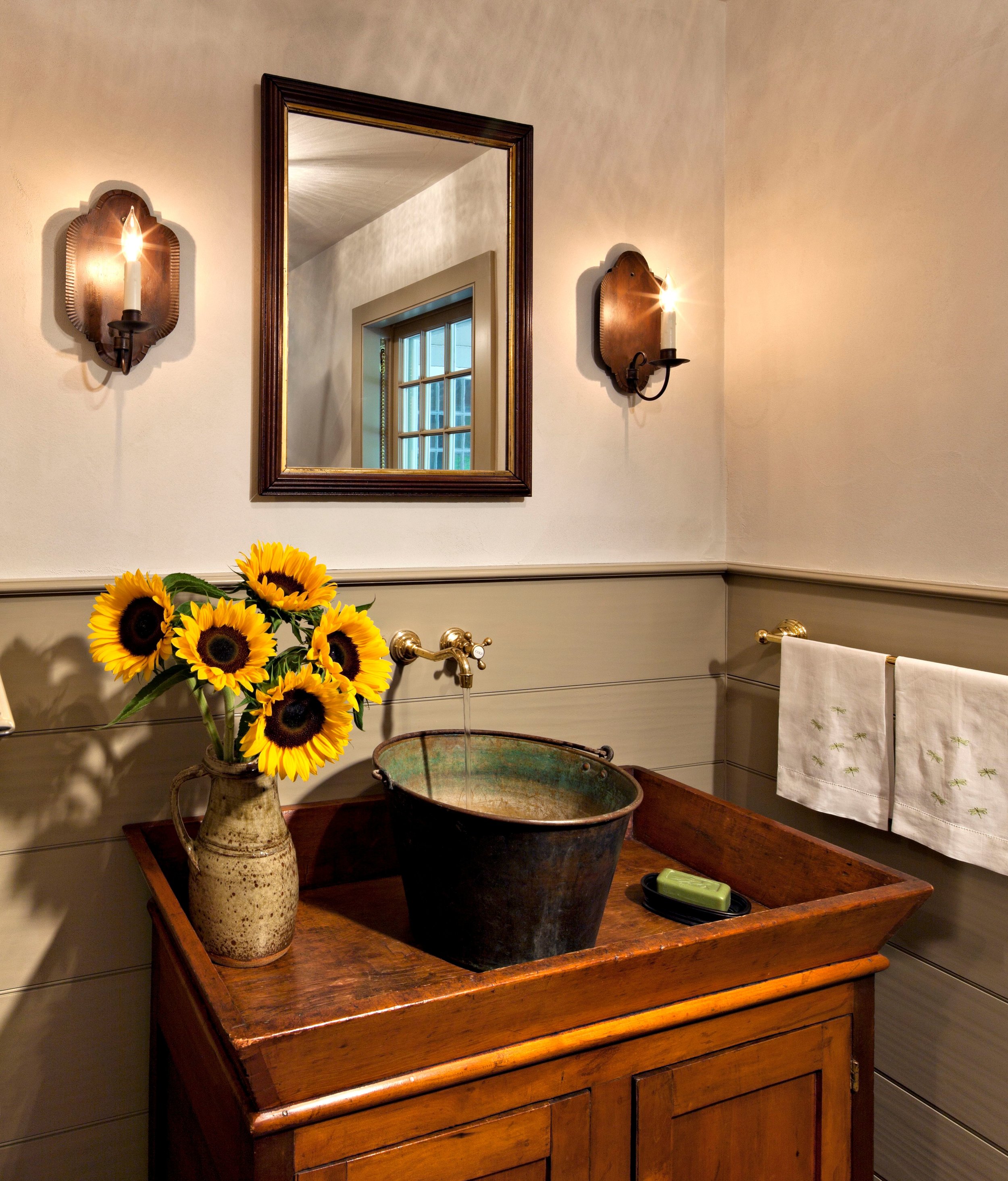The New Rustic Aesthetic
As a reaction to today’s slick packaged world, we’re seeing a new appreciation for antique and rustic materials that have patina and reflect the artisan’s hand. Incorporating hand-hewn antique timbers, antique limestone flooring, hand-forged iron and natural plaster give a home a warmth and sense of history. These antique and rustic materials offer depth and beauty while responding to a more relaxed lifestyle. They also provide the opportunity to create a truly personalized, unique home.
As architects and interior designers we welcome the challenge of creating new environments utilizing rustic antique building materials and objects. We also see it as a very ecological practice. What could be greener than incorporating recycled materials into a new home?
Here are a few examples of how we’ve created truly unique homes using antique and rustic materials and objects:
An 18th century Connecticut stable was repurposed as a rustic Pub for an active family. The weathered copper stanchions and rusted grills of the original stalls now define the bar area. Salvaged wide pine boards have been fashioned into wainscoting and sliding barn doors. Rough bluestone flooring complements the hand-hewn timbers.
The salvaged fieldstone range surround of this Farmhouse Kitchen recalls an antique cooking fireplace, complete with an iron crane to display ladles. The bold red cabinetry, chestnut island top and bronze fittings all contribute to the warm rustic atmosphere.
The rustic feel of this farmhouse extends into the Master Bathroom. Hand-planed horizontal boards create a primitive wainscot below rough unpainted plaster walls. The warmth of the salvaged white oak flooring contrasts with the burnished iron finish of the freestanding tub. A folky porch railing displayed as artwork adds a graphic and playful touch.
Left: Unfinished antique chestnut cabinetry gives this Wine Room a feeling of substance and antiquity. A graphic tribal rug, weathered trestle table and chunky iron lantern were selected as primitive accents.
Right: The plaster groin-vaulted ceiling and gravel flooring suggests a primitive European Wine Cellar.
This farmhouse Living Room contrasts formal and rustic elements. The simple dignified hand-planed paneling is contrasted with the rough plaster ceiling articulated with antique timber beams. The weathervane and windmill weights, displayed on the recessed shelving, were selected for their agrarian theme.
Something as utilitarian as a Potting Shed is an opportunity for expressing the beauty of simple rustic materials. The walls are sheathed in unfinished pine; the flooring is paved in natural cleft bluestone. An arrangement of simple Shaker pegs creates a versatile support for hanging tools and provides an interesting texture.
Left: The contrast of simple modern elements with rustic features can be very dynamic. For the Powder Room of this converted barn, we nestled a simple granite counter against the rough red sheathing of the silo.
Right: An antique brass bucket makes a great country sink in this farmhouse Powder Room.
Even a very high-tech function, such as this state-of-the-art Theater, can have a very rustic feeling.
All images by Robert Benson Photography


